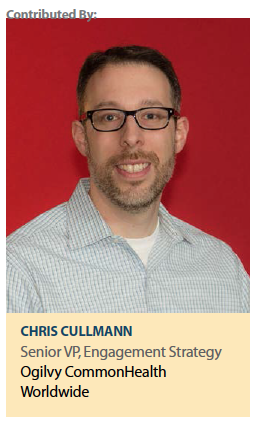At the heart of every digital trend is a user behavior — video is no different. As humans, we have loved telling stories since  the beginning of time. We love telling stories, and hearing them, and there is no better medium for storytelling than video.
the beginning of time. We love telling stories, and hearing them, and there is no better medium for storytelling than video.
Proof Is in the Numbers: The Data Support This Claim Across All Digital Channels
YouTube is generating 4 billion views per day, with mobile users spending an average of 40 minutes on the channel per session. This makes sense, since YouTube is the preferred channel for longer-form video content, with the average video being about 12 minutes long.
On the other hand, video consumption on Facebook is a more passive experience. With 8 billion video views per day, videos are typically shorter in length, and 15- to 20-second video clips typically have the best performance. True storytelling becomes a bit challenging due to the length, but Facebook is more about impressions, reach, and quick hits than it is about storytelling.
Snapchat is leading the pack with over 10 billion video views per day. Snapchatters are creating and viewing 10-second clips within the mobile-only app, and content creators are clamoring to get in on the action as well with unique video vingettes designed specifically for Snapchat and its vertical screen format.
Logically, Brands Want to Play
Many brands, including those in the healthcare space, have sought to create video content that moves and inspires its consumers. Dove empowers and inspires woman to embrace who they are through documentary-style videos. Similac’s Sisterhood of Motherhood and Pfizer’s Sick Just Got Real campaigns turned to cynicism and humor to celebrate what it’s really like to be a parent in today’s world.
Despite their successes, branded videos have a hard time living up to the virality of their user-generated and “authentic" nonbranded counterparts. The main reason is that savvy, digital natives recognize these videos as slickly produced advertisements, even though there could be little to no product placement in the video. Among this demographic, more than 90% find video ads annoying and disruptive, with length and context being the critical factors of success for the content.
User-Generated and User-Inspired Content Can Help
Unlike user-generated photography, which can be reposted and stylized by brands to achieve a certain aesthetic, it’s been difficult for brands to embrace and reuse user-generated video content.
In many cases, it might be that the quality is not good enough, or the backdrop is inappropriate. Branding becomes a challenge if the video is not framed right.
Companies like Storyvine provide viable solutions to help brands leverage user-generated content through the use of a branded template, an intuitive user interface, and a pre-scripted series of questions. Together, the resulting footage provides brands with controlled video assets that tell the stories they want to share about their brand. In addition, it provides brands with a secure content management system from which to pull the video assets from. This is a home run for healthcare brands that need to get content approved by various regulatory processes.
Other brands, like Pfizer and its Sick Just Got Real campaign, are encouraging its followers to actively participate in the creation of video content. On Facebook, consumers are asked to vote for different scenarios through polls and surveys, allowing the brand to respond with the content streams that are most meaningful to their targets.
Video is Here to Stay
There is no doubt that every demographic is embracing video content, both as content consumers and creators. Brands have an opportunity to reach their targets through a variety of channels using video to tell their stories.
Networks and content producers from Facebook, Snapchat, Yahoo!, and Consumer Reports are hiring video producers and promoting user-submitted videos as hero content. The biggest challenge brands face is creating video content that engages their consumers on an authentic, emotional level, while providing that content in a contextually relevant way that doesn’t feel disruptive and supports their brand. (PV)
Ogilvy CommonHealth Worldwide — the health behavior specialists of Ogilvy & Mather — is committed to creativity and effectiveness in healthcare communications, everywhere.
For more information, visit ogilvychww.com.











